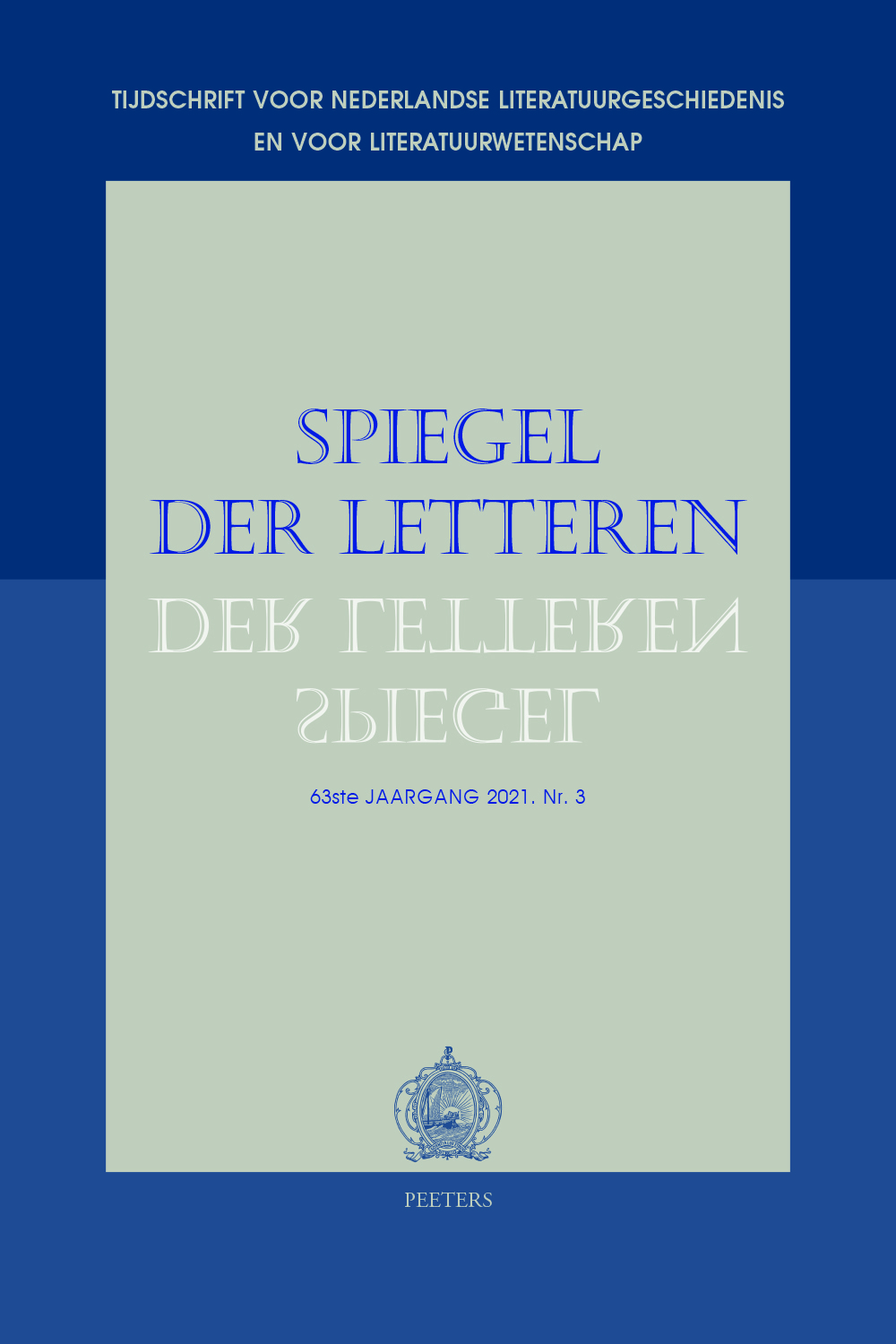 previous article in this issue previous article in this issue | next article in this issue  |

Preview first page |
Document Details : Title: Door de oogharen gelezen Subtitle: Naar aanleiding van Thomas Vaessens' Geschiedenis van de moderne Nederlandse literatuur Author(s): ANBEEK, Ton Journal: Spiegel der Letteren Volume: 56 Issue: 2 Date: 2014 Pages: 205-216 DOI: 10.2143/SDL.56.2.3030640 Abstract : In his History of Modern Dutch Literature, Vaessens proposes a new way of looking at literary texts of the past: a ‘transhistorical’ way. To that purpose he creates five ‘frames’ (or ‘reading attitudes’) that are named after five historical currents: romanticism, realism, avant-garde, modernism and postmodernism. Transhistorical reading means reading a recent text within a romantic frame, an eighteenth-century novel within a modernist frame, etc. In this article, several objections to Vaessens’ method are put forward, both on a theoretical and on a practical level. Borrowing the names of his five ‘frames’ from literary movements of the past, Vaessens also takes on the extremely versatile character of these concepts. When Vaessens broadens the concept of ‘modernism’, the result is a frame that fences in authors that have little in common. The examples Vaessens gives of transhistorical reading are not convincing. When he applies the romantic frame it turns out that the binary opposition he uses (‘organic’ versus ‘mechanic’) does no justice to the subtleties in a poem by Vasalis or the particular style of a novel by Bordewijk. |
|


